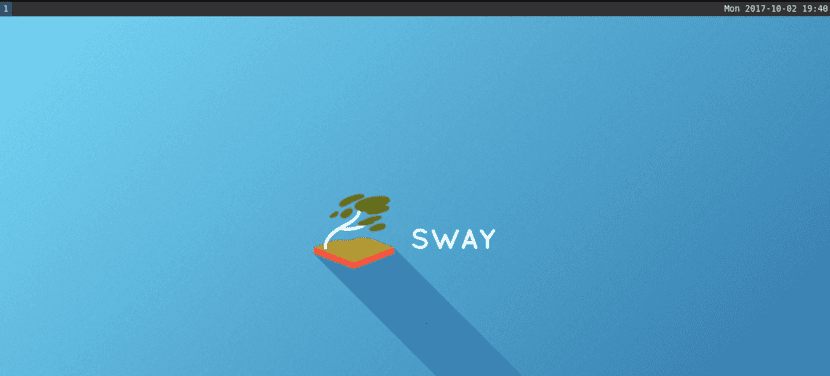
Sway is a Wayland songwriter and a drop-in, which is intended to be a replacement for the i3 window manager for X11. Works with existing i3 setup and supports most i3 features, plus some extras.
Sway allows you to organize application windows logically, rather than spatially. The windows are arranged in a grid by default, which maximizes the efficiency of your screen and can be quickly manipulated using just the keyboard.
About Sway
I3 window manager support is provided at the command level, configuration files, and IPCs, allowing Sway to be used as a transparent replacement for i3 using Wayland instead of X11.
En Sway the following components are offered to organize a complete user environment:
- swayidle (background process with KDE idle protocol implementation)
- swaylock (screen saver)
- Mako (notification manager)
- Grim(tool dedicated to screenshots)
- Slurp (selecting an area on the screen)
- wf recorder (takes care of the video capture)
- Way bar (An application bar)
- virtualboard (takes care of the on-screen keyboard)
- wl-clipboard (to work with the clipboard)
- wallutils (desktop background control).
Sway is being developed as a modular project built on top of the wlroots library, which includes all the basic primitives for organizing the work of the composite manager.
Wlroots includes backends to abstract access to the screen, input devices, render without direct access to OpenGL, interact with KMS / DRM, libinput, Wayland, and X11 (a middle layer is provided to run X11-based X11 applications).
Besides Sway, the wlroots library is actively used in other projects , including Librem5 and Cage. In addition to C / C ++, bindings were developed for Scheme, Common Lisp, Go, Haskell, OCaml, Python, and Rust.
The Sway project code is written in C and distributed under the MIT license. The project intends to be used on Linux and FreeBSD.
About the new version of Sway 1.1
A few hours ago the launch of the new version of Sway 1.1 was announced, a version in which an hour after its 1.1.0 release, a corrective 1.1.1 release was published with the removal of the added changes by mistake they are not compatible with wlroots 0.6.
Among the main novelties of this new version we can find that the swaybg utility to manage the desktop background is highlighted in a separate project.
With this announcement, now Swaybg is no longer tied to Sway and can be used with any Wayland composite server that supports the advanced wlr-layer-shell, xdg-output, and xdg-shell protocols.
On the other hand Work has been done to eliminate incompatibilities with the i3 window manager. In addition to that support for touch screens has been added to the stabilizer bar panel (activation of elements by touching and cycling on the desks with a changing gesture).
In the scroll bar, the "overlay" mode is implemented to display the panel on other windows without processing input events.
Y added the ability to disable control keyboard shortcuts using the unbind setting {sym, code, switch}.
How to get Sway?
For those interested in being able to test Sway on their systems, dThey should bear in mind that the main requirement to be able to use it is to have Wayland under the hood of your system.
In the case of Ubuntu this is possible, you just have to enable the session with Wayland. Another distribution that can make use of Sway without problems is Fedora, where even Sway is already in the Fedora repositories for installation.
To install Sway on your distro, You should visit the following link where you will find the project files as well as the instructions for its installation.
It is important to mention that Sway will not work with proprietary graphics drivers. So if you have a video card running with the proprietary drivers, you should uninstall these and use the free drivers instead.